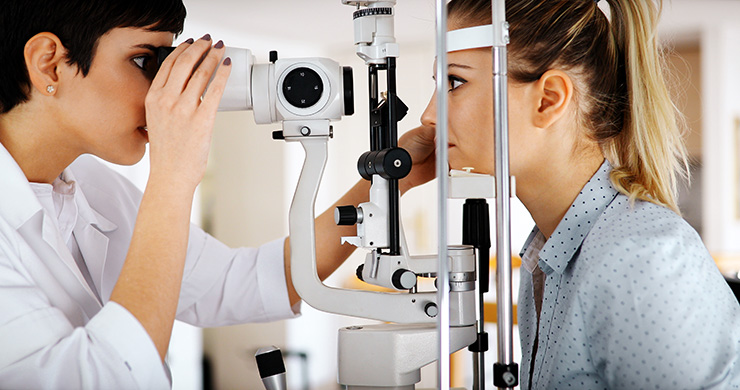Exactly How an Eye Doctor Can Transform Your Vision Health in Chino
Exploring the most up to date Technical Improvements in Optometry and What They Mean for Eye Doctors
From the accuracy of Optical Coherence Tomography to the nuanced understandings provided by AI-driven analysis tools, these technologies are setting brand-new standards in person analysis and treatment. As these developments penetrate the practice, eye doctors are encountered with the obstacle of embracing these devices to improve client results.
Developments in Diagnostic Tools
Progressing the area of optometry, technologies in analysis tools have changed the means eye treatment experts evaluate and diagnose eye conditions and aesthetic problems. The past decade has seen significant technological innovations, enabling even more comprehensive and exact assessments.
Another key advancement is the intro of advanced corneal topography systems, which map the surface area curvature of the cornea with precision. These tools are particularly beneficial for suitable call lenses and identifying corneal problems. In addition, digital retinal imaging has transformed standard ophthalmoscopy, providing detailed, panoramic sights of the retina that promote thorough aesthetic exams.
The advancement of wavefront aberrometry has also been vital, making it possible for the analysis of refractive mistakes with unequaled precision (Optometrist Chino). This innovation helps in customizing restorative lenses and improving surgical end results for refractive surgical procedures. Jointly, these analysis innovations equip eye doctors to deliver exceptional patient treatment, guaranteeing very early intervention and customized treatment techniques, eventually boosting aesthetic health results
AI in Patient Monitoring
Building on the structure of sophisticated analysis tools, the unification of expert system (AI) in client administration represents a transformative jump for optometry. AI systems are increasingly employed to boost performance, accuracy, and personalization in individual treatment. By evaluating substantial quantities of data, AI can identify patterns and predict prospective ocular problems, allowing optometrists to customize treatments better. This capability is essential in handling chronic eye conditions such as glaucoma and diabetic retinopathy, where very early discovery and constant monitoring are key.
Additionally, AI-driven platforms promote streamlined person communications and administrative processes. Automated scheduling, online examinations, and personalized follow-up plans not only boost client contentment however additionally maximize time administration for specialists. These systems can triage people based on the urgency of their conditions, making certain that those in critical demand receive timely attention.
Additionally, AI improves decision-making by giving optometrists with evidence-based referrals and treatment pathways. By integrating data from electronic wellness records, AI devices offer understandings that educate medical choices, lowering the threat of errors and enhancing client outcomes. As AI remains to evolve, its duty in client management will likely expand, improving the landscape of optometric treatment.
Advancements in Retinal Imaging
In the world of optometry, retinal imaging has seen exceptional technological improvements that are enhancing analysis capabilities and client care. Technologies such as Optical Coherence Tomography (OCT) and fundus photography have actually reinvented exactly how eye doctors analyze the retina and envision.
Boosted imaging methods like OCT angiography are further refining diagnostic precision. This non-invasive technique maps blood circulation in the retina, using important understandings right into vascular wellness without the demand for color shots. Additionally, adaptive optics technology is being integrated right into retinal imaging systems to remedy eye aberrations, supplying unprecedented photo quality. Such improvements promote the recognition of minute retinal changes that could represent condition progression.
In addition, developments in expert system are enhancing retinal imaging by enabling automated analysis of big datasets. These systems help eye doctors in determining patterns a measure of pathology, therefore boosting diagnostic precision and performance. Jointly, these developments are transforming retinal imaging right into a keystone of modern-day eye treatment, improving end results and increasing therapeutic opportunities.
Teleoptometry's Expanding Function
Teleoptometry is increasingly becoming an important part of eye treatment, driven by developments in electronic interaction and diagnostic devices. As optometry embraces electronic makeover, teleoptometry assists in remote consultations, allowing eye doctors to prolong their services beyond standard boundaries. This is especially useful in underserved and rural locations where accessibility to specialized eye care is often restricted. By leveraging high-resolution video clip conferencing and progressed retinal imaging, optometrists can carry out extensive eye examinations from afar, making certain prompt medical diagnosis and therapy.
The combination of expert web link system (AI) additional enhances teleoptometry, making it possible for the analysis of aesthetic data and assisting in the discovery of ocular conditions such as glaucoma and diabetic person retinopathy. AI-powered algorithms can rapidly analyze complicated imaging information, supplying optometrists with valuable understandings that bolster professional visit homepage decision-making.
In addition, teleoptometry supports continuity of care via seamless combination with electronic wellness records (EHRs), enabling optometrists to keep extensive patient histories. When consulting with various practitioners., this ensures that clients get tailored and regular care also.
In spite of these advantages, obstacles stay, including guaranteeing data safety and security and managing person expectations. Nonetheless, teleoptometry stands for a significant stride in the direction of even more obtainable, efficient, and patient-centered eye care. As innovation progresses, its duty is poised to expand better.

Future Trends in Eye Care
A myriad of ingenious trends is readied to reshape the future of eye treatment, driven by technical developments and the advancing requirements of individuals. One considerable fad is the combination of man-made knowledge (AI) in diagnostics, which guarantees to enhance the accuracy and effectiveness of eye assessments. AI formulas can assess vast quantities of data from retinal images, potentially identifying problems like diabetic person retinopathy and glaucoma earlier than standard approaches.
Additionally, personalized medicine is gaining traction in optometry, with genetic screening informing customized treatment plans. This method aims to enhance client results by customizing interventions to individual hereditary profiles. Wearable innovation, such as smart contact lenses, is likewise imminent, using real-time surveillance of intraocular pressure or sugar degrees, hence supplying continual insights into systemic and ocular wellness.
The adoption of augmented fact (AR) and digital truth (VIRTUAL REALITY) in training and client education is an additional emerging trend. These technologies provide immersive experiences that can boost understanding and skills both for optometrists and people. As these trends develop, eye doctors must remain abreast of technical developments find more info to provide innovative care, making certain enhanced patient outcomes and complete satisfaction in the vibrant landscape of eye treatment.
Conclusion

Jointly, these analysis improvements encourage optometrists to supply premium client care, guaranteeing early intervention and tailored treatment approaches, eventually improving visual health and wellness outcomes.

As these modern technologies proceed to develop, optometrists have to adjust and integrate them right into method, ultimately maximizing operations effectiveness and elevating the criterion of eye care supplied to clients.